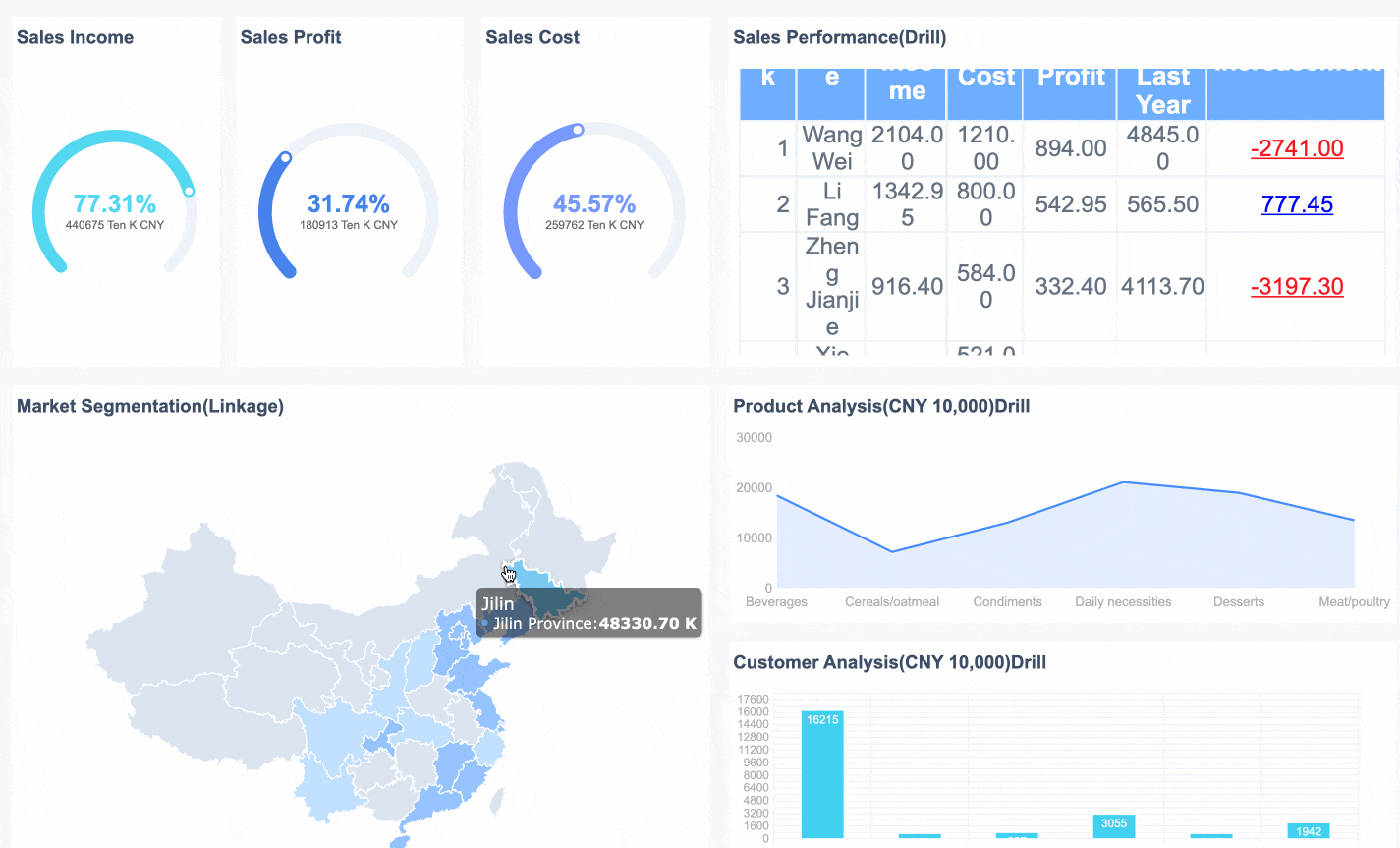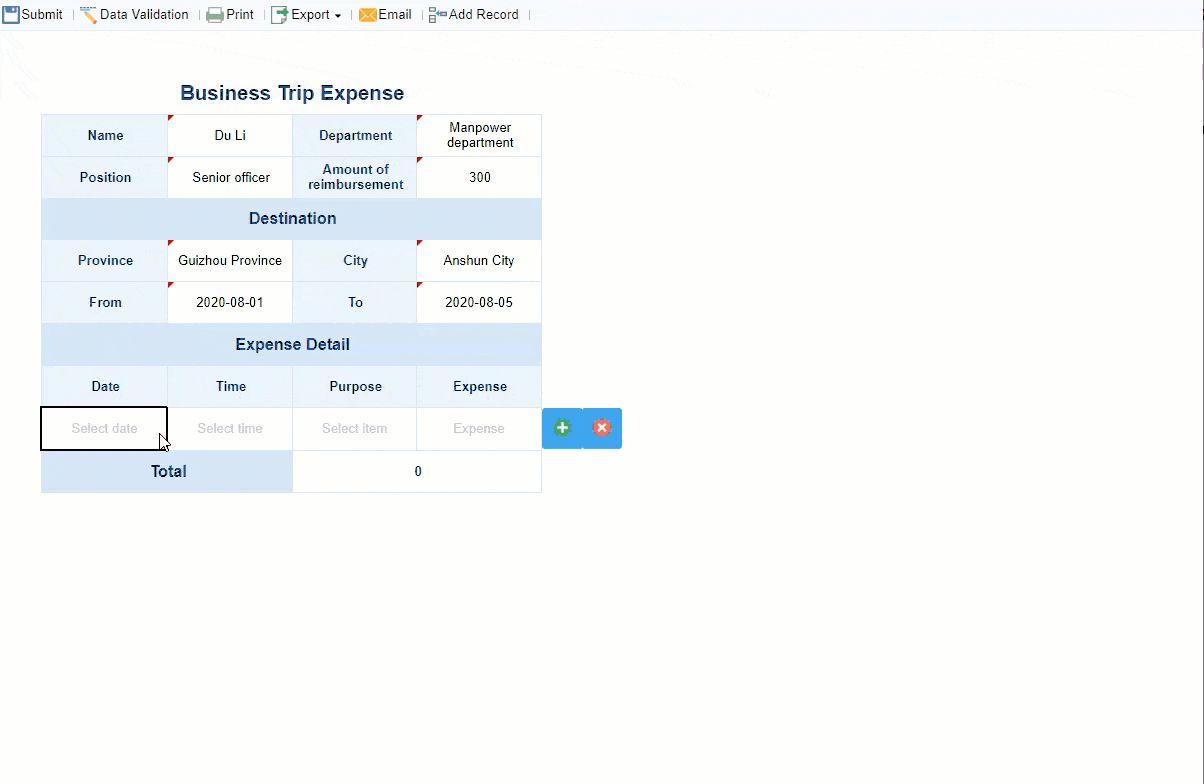

Data capture involves collecting and organizing information from various sources for analysis. In today's business world, this process plays a crucial role. You can harness data capture to improve accuracy, enhance decision-making, and boost efficiency. Businesses often choose between manual and automated approaches. Automated data capture stands out by reducing errors and increasing speed. It allows you to access precise and instant data, leading to cost savings and competitive advantages. Embracing data capture ensures your business stays ahead in a data-driven environment.
Understanding Data Capture
Definition and Explanation of Data Capture
Data capture involves gathering information from various sources and organizing it for analysis. This process is essential in today's data-driven world. You can think of data capture as the bridge between raw data and actionable insights. It allows you to transform unstructured information into a structured format that computers can process efficiently.
Key Components of Data Capture
Data capture consists of several key components. First, you need a source of data, which can be anything from customer feedback forms to sensor readings. Next, you require tools or technologies to extract this data. These tools can range from simple scanners to advanced software solutions. Finally, you must store the captured data in a way that makes it easy to access and analyze.
Historical Context and Evolution
The evolution of data capture has been remarkable. Initially, businesses relied on manual methods, such as paper forms and spreadsheets. Over time, technology advanced, leading to automated data capture solutions. These solutions have transformed industries by enhancing efficiency and accuracy. For example, in the manufacturing sector, automated data capture has become a strategy for gaining competitiveness and efficiency. It has also played a crucial role in digital transformation.
Importance of Data Capture in Various Industries
Data capture is vital across multiple industries. It helps organizations improve operations, enhance customer experiences, and make informed decisions.
Healthcare
In healthcare, data capture is indispensable. You can use it to collect patient information, track medical histories, and manage billing processes. Automated data capture ensures accuracy and reduces the risk of errors, which is critical in patient care.
Retail
Retailers benefit significantly from data capture. By collecting data on customer preferences and purchasing habits, you can tailor marketing strategies and improve inventory management. Automated data capture also enhances security and improves customer experiences by streamlining transactions. Here is a dashboard created by FineReport.

Finance
The finance industry relies heavily on data capture. You can use it to process banking documents, validate customer identification data, and detect fraud. Automated data capture enhances security and ensures compliance with regulations, making it an invaluable tool for financial institutions.
Methods of Data Capture

Data capture plays a pivotal role in modern business operations. You can choose between manual and automated methods to collect and process data. Each method has its own set of techniques, challenges, and benefits.
Manual Data Capture
Manual data capture involves human intervention to collect and record information. This traditional approach has been around for decades.
Traditional Techniques
In manual data capture, you often rely on paper forms, spreadsheets, and direct data entry. You might use these methods to gather customer feedback, fill out surveys, or record transactions. While these techniques have served businesses well in the past, they require significant time and effort.

The above images demonstrate the data entry of FineBI, click here to engage.
Limitations and Challenges
Manual data capture presents several challenges. First, it is time-consuming. You need to allocate resources to enter data manually, which can slow down your operations. Second, manual methods are prone to errors. Human mistakes can lead to costly inaccuracies. Third, manual data capture can be frustrating. The repetitive nature of data entry can lead to fatigue and further errors. These limitations make manual data capture less efficient compared to automated methods.
Automated Data Capture
Automated data capture leverages technology to streamline the process of collecting and processing data. This approach offers numerous advantages over manual methods.
Technologies Involved
Automated data capture utilizes various technologies to enhance efficiency. You might use optical character recognition (OCR) to extract text from scanned documents. Barcode scanners and RFID readers can quickly capture product information. Advanced software solutions can automatically process and organize data from multiple sources. These technologies reduce the need for manual intervention and improve accuracy.
Advantages Over Manual Methods
Automated data capture offers several benefits. First, it accelerates data gathering. You can process large volumes of data quickly, reducing delays in decision-making. Second, it minimizes errors. Automated systems ensure accuracy by eliminating human mistakes. Third, it reduces labor costs. By automating data capture, you can allocate your workforce to more strategic tasks. Finally, automated data capture improves response time. You can access real-time data, enabling you to make informed decisions promptly.
Processes Involved in Data Capture
Data capture involves several critical processes that ensure the accurate collection and conversion of information into usable formats. Understanding these processes can help you implement effective data capture strategies in your organization.
Data Collection
Data collection is the first step in the data capture process. It involves gathering information from various sources to be used for analysis and decision-making. Here is the data connection of FineReport.

Sources of Data
You can collect data from a wide range of sources. These include:
- Paper Documents: Traditional forms, invoices, and contracts.
- Digital Files: Emails, PDFs, and spreadsheets.
- Websites: Online forms and user interactions.
- Sensors and IoT Devices: Real-time data from connected devices.
Each source provides unique insights, and combining them can offer a comprehensive view of your business operations.
Tools and Technologies
To efficiently collect data, you need the right tools and technologies. Automated data collection tools have become increasingly popular due to their ability to streamline the process. These tools can automatically extract data from online sources, reducing the need for manual entry. Technologies such as optical character recognition (OCR), natural language processing, and artificial intelligence (AI) play a significant role in enhancing data capture. They allow you to quickly and accurately gather data from various formats, making the process scalable and efficient.
Data Conversion
Once you have collected the data, the next step is to convert it into a format that can be easily processed and analyzed.
Formats and Standards
Data can exist in multiple formats, such as text, images, or numerical values. Converting this data into a standardized digital format is crucial for analysis. You should ensure that the data is structured in a way that aligns with industry standards, facilitating seamless integration with other systems.
Software Solutions
Various software solutions are available to assist with data conversion. These solutions can automatically transform raw data into structured formats, ready for analysis. By using advanced software, you can reduce errors and improve the accuracy of your data capture efforts. This not only saves time but also ensures that you have reliable data for making informed decisions.
Challenges in Data Capture
Data Quality Issues
Data quality is a critical aspect of data capture. You must ensure that the information you collect is accurate and consistent. Poor data quality can lead to incorrect analysis and misguided decisions.
Accuracy and Consistency
Accuracy refers to how closely your data reflects the real-world scenario it represents. Consistency means that data remains uniform across different datasets and time periods. Inaccurate or inconsistent data can skew results and lead to faulty conclusions. For example, if you capture customer feedback inaccurately, your business strategies might not align with actual customer needs. Therefore, maintaining high data quality is essential for reliable insights.
Data Cleaning Techniques
To address data quality issues, you can employ various data cleaning techniques. These methods help you identify and correct errors in your datasets. Common techniques include:
- Removing Duplicates: Eliminate repeated entries to ensure each data point is unique.
- Standardizing Formats: Convert data into a consistent format for easier analysis.
- Validating Entries: Check data against known standards or rules to ensure accuracy.
By implementing these techniques, you can enhance the reliability of your data capture efforts.
Security and Privacy Concerns
Security and privacy are paramount when capturing data. You must protect sensitive information from unauthorized access and comply with privacy regulations.
Regulatory Compliance
Regulatory compliance involves adhering to laws and guidelines that govern data collection and usage. Violating these regulations can lead to legal risks and damage your reputation. For instance, website data collection poses challenges if privacy regulations are not followed. You should familiarize yourself with relevant laws, such as the General Data Protection Regulation (GDPR) or the California Consumer Privacy Act (CCPA), to ensure compliance.
Data Protection Strategies
To safeguard data, you can implement various protection strategies. These measures help prevent unauthorized access and ensure data integrity. Consider the following strategies:
- Encryption: Use encryption to protect data during transmission and storage.
- Access Controls: Limit data access to authorized personnel only.
- Regular Audits: Conduct audits to identify vulnerabilities and improve security measures.
By adopting these strategies, you can mitigate security risks and protect sensitive information effectively.
Benefits of Effective Data Capture
Improved Decision Making
Data capture plays a pivotal role in enhancing decision-making processes. By collecting accurate and up-to-date information, you can make informed decisions that drive your business forward.
Data-Driven Insights
With effective data capture, you gain access to data-driven insights. These insights allow you to understand trends, customer behaviors, and market dynamics. For instance, automated data capture provides businesses with more precise data, reducing errors and saving time. This accuracy ensures that your decisions are based on reliable information, leading to better outcomes.
Enhanced Business Strategies
Data capture enables you to refine and enhance your business strategies. By analyzing captured data, you can identify areas for improvement and innovation. You can tailor your strategies to meet customer needs and stay ahead of competitors. Automated data capture supports this by providing timely and relevant data, allowing you to adapt quickly to changing market conditions.
Operational Efficiency
Effective data capture significantly boosts operational efficiency. It streamlines processes and reduces costs, making your business more agile and competitive.
Streamlined Processes
Data capture automates many manual tasks, leading to streamlined processes. You can eliminate bottlenecks and reduce the time spent on data entry. Technologies like optical character recognition (OCR) and artificial intelligence (AI) automate data extraction, allowing you to focus on core business activities. This efficiency translates into faster response times and improved productivity.
Cost Reduction
By implementing data capture solutions, you achieve substantial cost savings. Automated systems reduce the need for manual labor, lowering operational expenses. Additionally, accurate data capture minimizes errors, preventing costly mistakes. You can allocate resources more effectively, investing in areas that drive growth and profitability.
Future of Data Capture

Emerging Technologies
AI and Machine Learning
Artificial intelligence (AI) and machine learning are transforming data capture. You can use these technologies to enhance accuracy and efficiency. AI-based software captures data in real-time, reducing errors and speeding up processes. This technology allows you to analyze vast amounts of data quickly, providing valuable insights. AI and machine learning also adapt to new data patterns, improving over time. This adaptability ensures that your data capture remains effective as your business grows.
IoT and Big Data
The Internet of Things (IoT) and big data are reshaping how you capture data. IoT devices collect data from various sources, such as sensors and smart devices. This data provides real-time insights into operations and customer behavior. Big data technologies process and analyze this information, helping you make informed decisions. By integrating IoT and big data, you can capture more comprehensive data sets. This integration offers a holistic view of your business, enabling you to optimize processes and improve customer experiences.
Trends and Predictions
Increased Automation
Automation continues to be a significant trend in data capture. You can expect more businesses to adopt automated solutions to streamline data collection. Automated data capture reduces manual labor, saving time and resources. It also minimizes errors, ensuring that your data is accurate and reliable. As technology advances, automation will become more accessible and affordable. This trend will allow even small businesses to benefit from efficient data capture.
Integration with Other Systems
Data capture will increasingly integrate with other systems. You can connect data capture tools with customer relationship management (CRM) systems, enterprise resource planning (ERP) software, and other platforms. This integration ensures seamless data flow across your organization. It allows you to access and analyze data from multiple sources in one place. By integrating data capture with other systems, you can enhance collaboration and improve decision-making. This trend will lead to more cohesive and efficient business operations.
Practical Advice for Implementing Data Capture
Best Practices
Choosing the Right Tools
Selecting the appropriate tools for data capture is crucial. You should evaluate your business needs and choose technologies that align with your goals. Automated data capture solutions offer significant advantages. They reduce human errors and streamline workflows by capturing data directly from various sources. Consider tools that provide encryption and data masking to protect sensitive information. This ensures that your data remains secure from unauthorized access.
Training and Development
Investing in training and development is essential for successful data capture implementation. Your team should understand how to use the chosen tools effectively. Provide comprehensive training sessions to familiarize them with the technology. Encourage continuous learning to keep up with advancements in data capture methods. Well-trained staff can maximize the benefits of automated data capture, leading to improved accuracy and efficiency.
Common Pitfalls to Avoid
Overlooking Data Quality
Data quality is paramount in data capture. You must ensure that the information you collect is accurate and consistent. Ignoring data quality can lead to incorrect analysis and poor decision-making. Implement data cleaning techniques to maintain high-quality data. Remove duplicates, standardize formats, and validate entries to enhance reliability. By prioritizing data quality, you can trust the insights derived from your data capture efforts.
Ignoring Security Measures
Security is a critical aspect of data capture. Failing to implement robust security measures can expose your data to risks. Protect sensitive information by using encryption during transmission and storage. Limit access to data by implementing strict access controls. Conduct regular audits to identify vulnerabilities and improve security protocols. By addressing security concerns, you safeguard your data and maintain compliance with regulations.
Data capture plays a vital role in today's business landscape. It enables you to harness the power of information for improved decision-making and operational efficiency. As technology advances, the future of data capture looks promising. Emerging technologies like AI and IoT will continue to enhance its capabilities. You can expect increased automation and integration with other systems. Embracing effective data capture strategies ensures your business remains competitive. By adopting these strategies, you position yourself to thrive in a data-driven world.
FanRuan
https://www.fanruan.com/en/blogFanRuan provides powerful BI solutions across industries with FineReport for flexible reporting, FineBI for self-service analysis, and FineDataLink for data integration. Our all-in-one platform empowers organizations to transform raw data into actionable insights that drive business growth.
FAQ
Data capture involves collecting and organizing information from various sources for analysis. It serves as the foundation for making informed decisions in today's digital world.
You gather data from different sources, such as paper documents, digital files, or IoT devices. Then, you use tools and technologies to extract and convert this data into a structured format for analysis.
Technologies like optical character recognition (OCR), artificial intelligence (AI), and machine learning play a crucial role. These tools help automate the process, ensuring accuracy and efficiency.
Data capture allows businesses to make data-driven decisions. By collecting accurate information, you can improve operations, enhance customer experiences, and develop effective strategies.
Common challenges include data quality issues, security concerns, and regulatory compliance. You must ensure that your data is accurate, secure, and collected in accordance with relevant laws.
The future of data capture involves increased automation and integration with other systems. Emerging technologies like AI and IoT will continue to enhance the process, making it more efficient and accessible.








